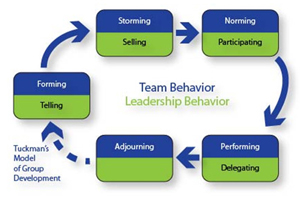| Teller check capture projects, like many projects, are large and have a number of critical factors. The key to a successful project is communication and a major piece of the communication puzzle is the team dynamic. In previous issues of Digital Communications, we’ve looked at developing a project charter, developing the project scope, creating a work breakdown structure and selecting the project team. Once the project team is selected, it is up to the project manager to develop the team to maximize efficiency and open lines of communication.
The goal of the project team, as well as each individual on the team, is to successfully complete the project (meeting project objectives on time and on budget). The challenge is that teams are made up of individuals with different backgrounds, different strengths and weaknesses, different communication styles, and that they are often spread out geographically around the country or around the world. Communication is one of the major challenges of managing a team and we will look at that in more detail in a future article. Yet, it is important to know your team as a project manager, including the needs of each member and the best way to meet those needs. Bruce Tuckman developed a helpful model to understand the stages of group development to better know how to meet the needs of the group. These stages are: Forming, Storming, Norming, Performing, and Adjourning. During the forming stage the team members work more independently since the team dynamic is still developing. The team is still learning the goals and objectives of the project and members are still looking for acceptance by the group. As the team members become more comfortable with each other and with the project’s overall goals and objectives, members begin to compete with the other members as to the best approach to achieve the goals of the project. Team members are willing to challenge the various ideas put on the table for consideration by other members of the team without feeling threatened. As the team begins to focus on one goal and plan, they enter into the norming stage during which each team member takes responsibility for his or her part in the success of the project. The team then begins to transition into the performing stage in which the team is beginning to work as a highly motivated and knowledgeable unit. The team members know their responsibilities well and have the skills necessary to accomplish their tasks. Although supervisors remain involved, the team has the skill set to make decisions on their own. When the project is complete, the team begins to close out all remaining tasks and responsibilities and move toward adjourning this team and moving on to the next project where it will all begin again. Since teams can be spread out around the country or around the world, it is important to create team building events and exercises to allow the team to get to know one another and to develop trust in each other. It is also important to invest in the members of the team through training and mentoring to build team cohesiveness. Most important is communication, which cannot be stressed enough. It will make or break a project. For more information or if you have questions, please contact Paul Rupple, PMP at (847) 446-2285, or by email. |

Check out Digital Check’s Teller and Branch Products:
|





